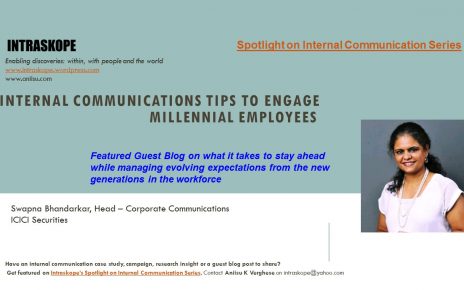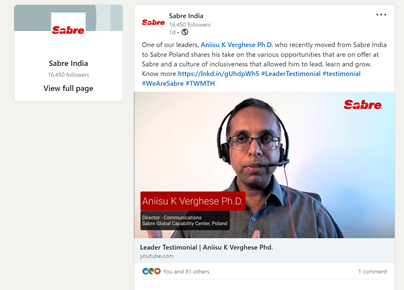If there is one question that goes through every CXO’s mind it is about steering and taking their organization to the next level amidst a sea of transformation sweeping the world. There is no easy answer to this question – although yesterday at the third meeting of the Best Employers’ Club organized by the Great Place to Work Institute, leaders got a peek into what is possible. The Institute invited Scott D. Anthony, a thought leader and an author on innovation to reflect on what makes some organizations tick and others fall by the wayside. Thank you Prasenjit, CEO – Great Place To Work Institute (India) for organizing a wonderful event.
On a video conference, Scott shared an invigorating talk on ‘How to Reposition Today’s Business While Creating the Future’ in which he looked at trends shaping businesses worldwide such as artificial intelligence and recommended approaches to stay ahead of the disruption curve. Hinging his views on research and habit forming literature Scott also addressed several pertinent questions from the audience. He felt that organizations which undertook dual transformations were better placed to be leaders in the future. For an internal communicator, these changes are positive and the opportunities are immense. One, crafting a new narrative is important for transformation to be acceptable and second, over-communicating the messages helps in taking people along the journey.
What were my key takeaways?
– Businesses are underprepared for the scale of change: Sharing examples of Amazon, Netflix, and other organizations, Scott explained why competitors today won’t be the same tomorrow. Likewise, businesses today may not be able to continue their business models unless they introspect and bet on the future. In a study among managers and executives, nearly 90% believe that digital trends will sweep changes in their industries but only a small number (44%) are ready for the change.
– Scaling a business is challenging: Starting one is easy, but sustaining it over time is tough. Change comes in pairs, is what Scott believes. True transformation is when leaders can realign to meet the disruption today while crafting a new path basis core assets that differentiate the organization in the market. Top management buy-in, speed to implement, clear vision and consistent communication were aspects that helped companies lead through dual transformation.
– Thinking short-term can be risky: What works today may not in the future and yet leaders take a myopic view of their business and where it is heading. If organizations think ‘structure’ they are in trouble considering the world is moving towards ‘platforms’.
– Reward the right approach: In organizations, risk and rewards are often at opposite poles of a continuum and that can come in the way of innovation. When organizations, recognize and reward employees who focus on the appropriate approach (even if it doesn’t give you the outcomes) it can lead to better commitment to do the right thing for the business.
– Inculcate a culture of innovation: Getting employees to think like children and ‘play’ can bring innovation front and center for organizations. Diversity matters and allowing people to fail creates trust and drive to try harder. What matters is how organizations react when things don’t go as planned. Playing the ‘blame game’ doesn’t help. Rather, taking an objective view of the situation leads to concrete outcomes.
– Influence habits and behaviors: Being addicted to ‘business as usual’ can be damaging. To inject curiosity into the organizational culture we need to understand what holds us back and break boundaries. While I interacted with some of the leaders present it became evident that the pressure to get results (even a ranking and rating) drove behaviors that may potentially come in the way of business focus.
Overall, simplifying the transformation proposition, creating avenues for employees to innovation and encouraging storytelling can enable organizations to scale their impact.



